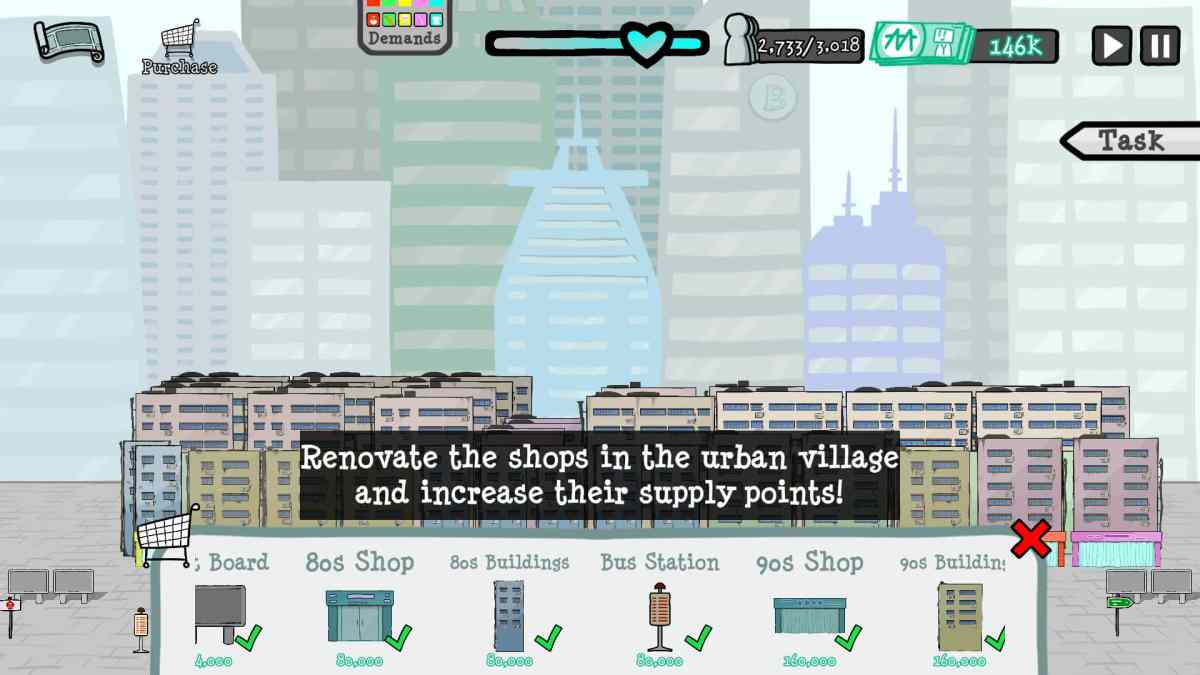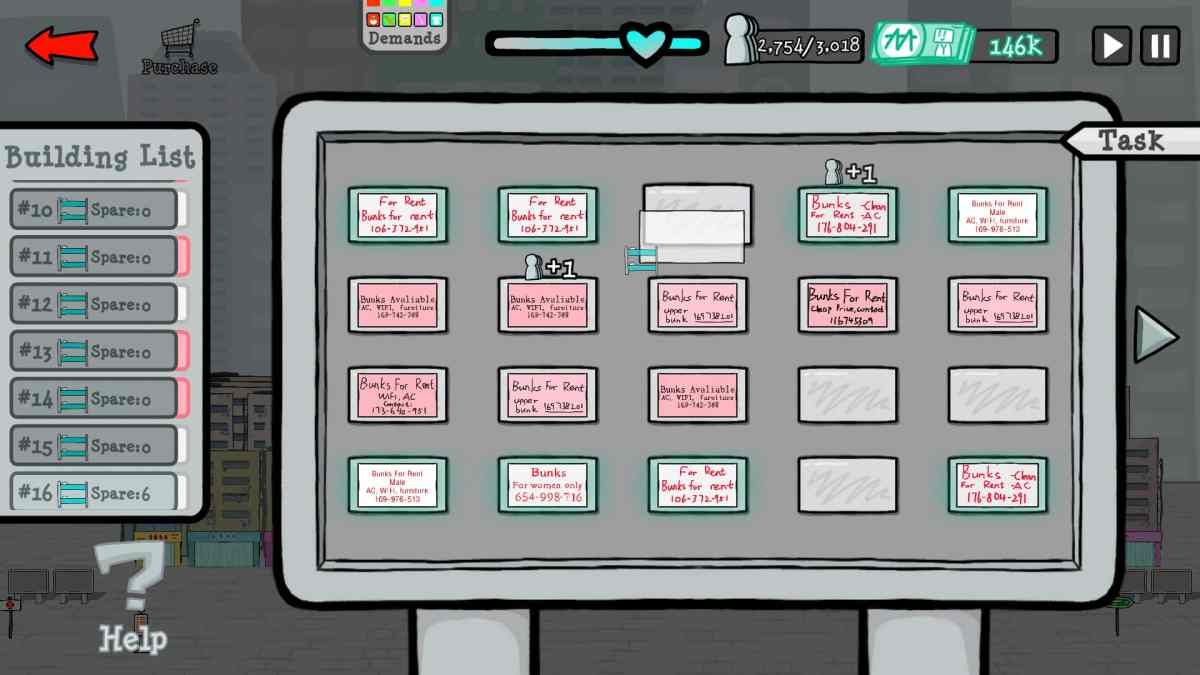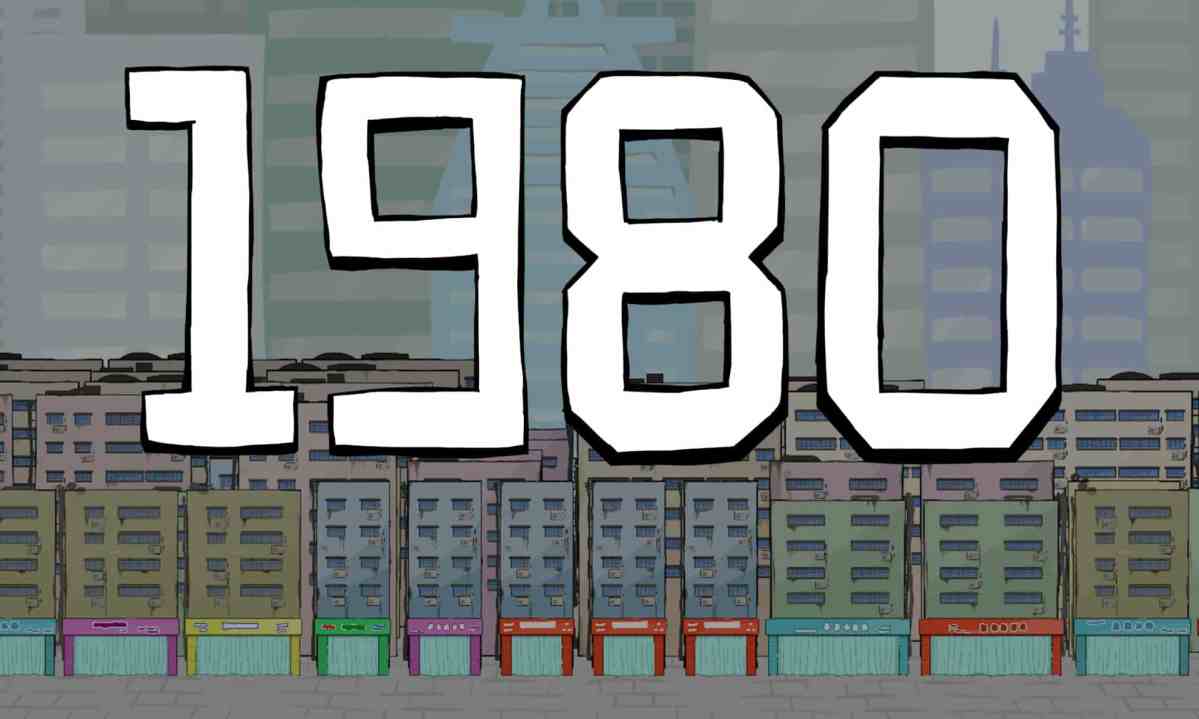Not that long ago, the city of Shenzhen, China, was little more than a fishing port. A decision to make the town a Special Economic Zone in 1980, however, meant that Shenzhen was given autonomy over its economic choices, leading to a boom in the town’s manufacturing and electronic industries. The population of Shenzhen exploded, with densely packed “urban villages” circling the city center. These towns were often haphazardly thrown together, with houses built so close together neighbors could shake hands across balconies, but the developments were also fondly remembered as a welcoming place for the poor and immigrants alike. 1980 puts the player in charge of one of these maze-like villages, following the progress of the settlement from the ‘80s to modern day.
1980 begins as most city builders do, with a blank patch of land and a small sum of money to get development started. The overall goal is to move in as many people as possible, balancing building large numbers of houses with developing access to shops and utilities to make the urban village more appealing. This big goal is broken down into smaller tasks, with access to bigger buildings given when certain population targets are hit or cash awarded for satisfying the neighborhood’s demand for many restaurants.
The game progresses in six-month turns, with the tall buildings of Shenzhen looming ever closer with every passing year. A fresh payout of rent is collected each turn, and citizens will move in or out depending on how well the village appeals to their interests. The wants and needs of the citizens change as the years roll by, with the cheap bunk bed-style accommodation favored by factory workers slowly waning in favor of private apartments for young educated professionals. Practical hole-in-the-wall diners are replaced by trendy cat cafes, and eventually the whole settlement is demolished to make room for a highway.
Completing the goals the game assigns is easy, to the point where I had no new tasks left for the last third of the game. Fans of city builders will not find much challenge here, although the game would serve as a good introduction to the basics. A minigame about arranging rent advertisements does add a unique twist to the genre, but some bugginess in its execution meant I ignored the activity after a while. Flyers are in white and pink, and lining up four of the same color horizontally or vertically should award some extra cash. Half the time, however, the flyers would not match, even though they were the same color and same apartment type. Once the money was rolling in, it was much easier to just slap the advertisements down as fast as possible and skip forward to the next turn.
Despite the constant impending doom of gentrification, the characters of 1980 are a generally positive bunch. Every year or two the citizens of the game will have conversations, often commenting on how their lives are changing through the years. Many are hopeful immigrants or poor country folk, looking for a better life in the city. As the years roll on, things get harder for these families: They only see their relatives once a year for New Year’s celebrations, one man juggles three jobs to support his sick wife, and eventually many of these people are priced out of the neighborhood and have to move away.
Despite these troubles, the characters never express more than mild disappointment, and I was surprised that the game does not really make a statement about gentrification, for good or for ill. The redevelopment is just something the people accept as a fact of life. It is a shame that the human element is not further explored, as researching the real Gangxia Village for this article was a really fascinating glimpse into a different culture.

At the same time, it is understandable why such a complicated topic was not fully explored since the game’s translation into English is rather basic. Everything written is understandable, but some misspellings and odd phrasing stand out, and most of the characters have a child-like way of speaking. I certainly would not feel comfortable covering such a contentious topic in my second language.
1980 has a simple aesthetic, but I was impressed with the clean and friendly user interface. Each aspect of the game is explained well, and the different aspects of city maintenance are arranged appropriately. I liked the way Shenzhen’s large skyscrapers drew closer and closer as the years went by, sending the village from a little settlement on the outskirts of town to scraping against the heart of the CBD. I would have liked some more visual variety as the years went by — one of the upgrade options is to refurbish the buildings for the current decade, and it would be nice to see that change reflected on the buildings themselves. A hearty attempt is made at some peaceful MIDI background music, but the tunes do start to grate after a while, particularly since the game is surprisingly long.

1980 is a strong choice for a free beginner’s city builder that takes place during a really fascinating part of history. I would have liked to see more of that history incorporated into the game, but as a mechanic, the threat of gentrification is a powerful motivator. A few more tasks or a shorter runtime would make for a tighter experience, but for those who enjoy management sims, 1980 is still well worth a look.
Next week we will be playing Soulcaster, a 2D puzzle platformer. The game can be downloaded from Steam. If you would like to share your thoughts, discussions will be happening on the Discord server.






Published: Sep 18, 2020 01:00 pm